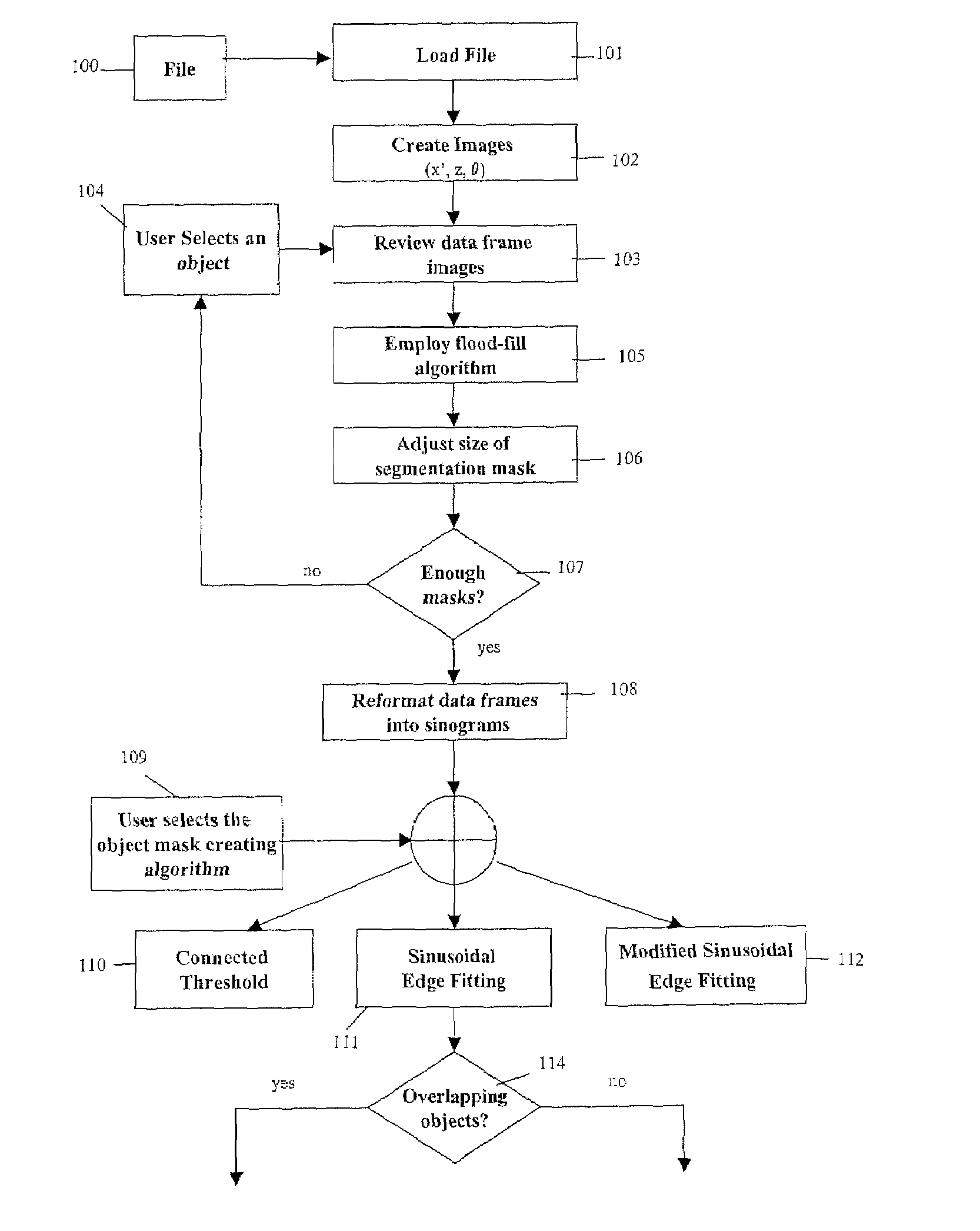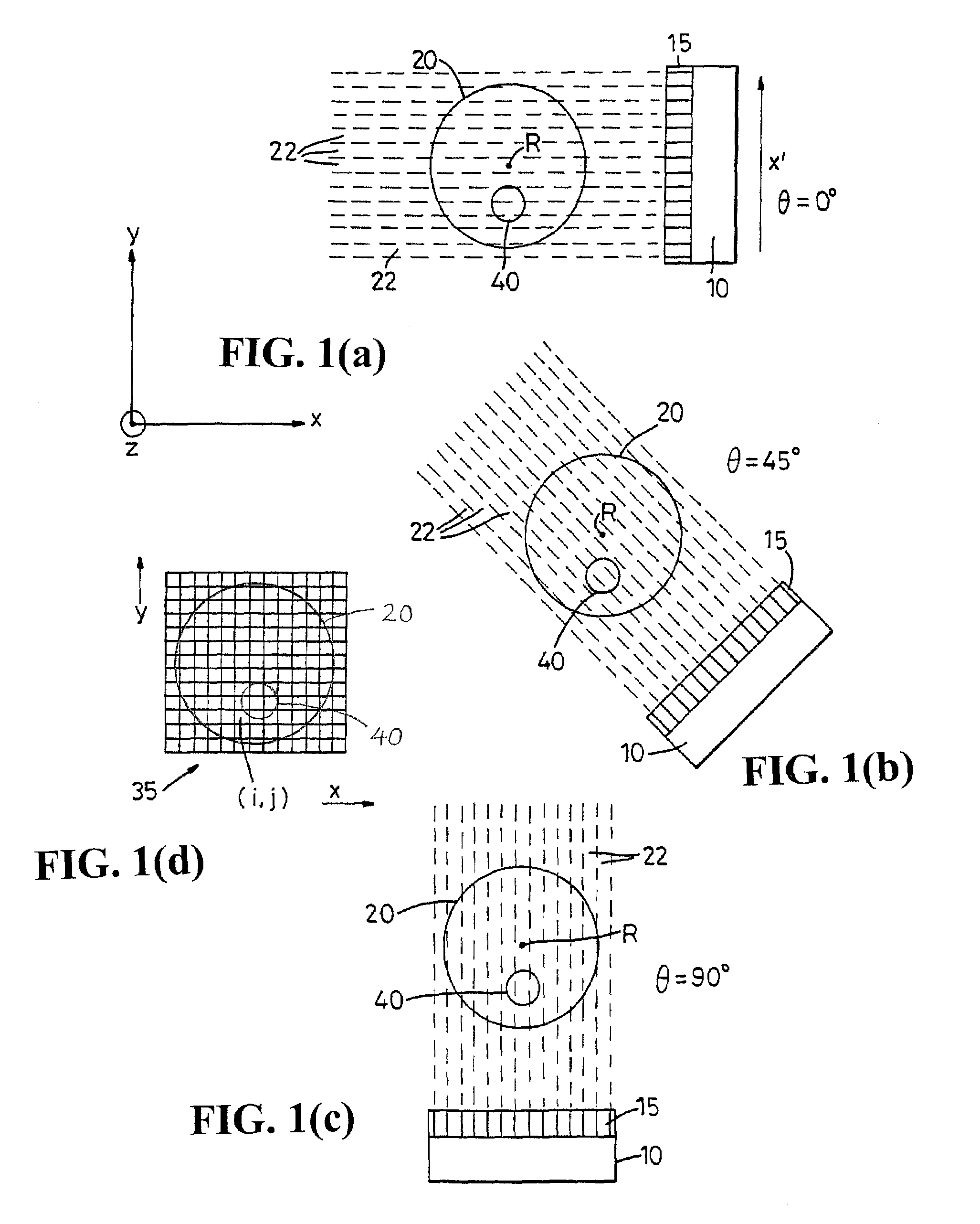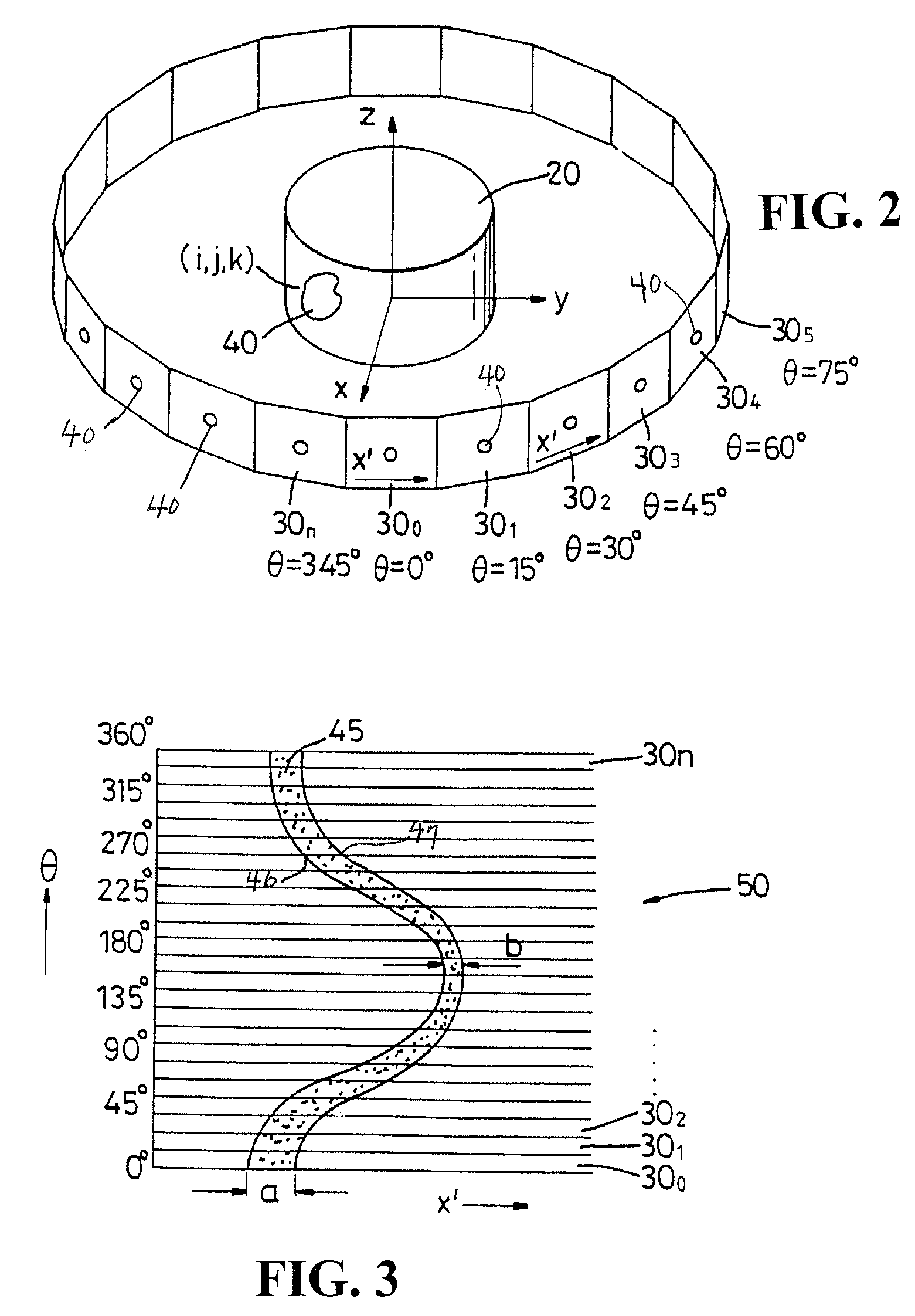Object identifying system for segmenting unreconstructed data in image tomography
an object identification system and image tomography technology, applied in image enhancement, image analysis, instruments, etc., can solve the problems of contaminating later data processing, affecting and affecting the quality of image tomography, so as to maintain the statistical independence of object data
- Summary
- Abstract
- Description
- Claims
- Application Information
AI Technical Summary
Benefits of technology
Problems solved by technology
Method used
Image
Examples
Embodiment Construction
[0041]The invention, as described below, provides for isolating the contributions of radiologically distinguishable objects from unreconstructed tomographic projection data. For example, unwanted contributions of high intensity objects can be removed from the unreconstructed tomographic data so that cross-sectional images reconstructed from the data are not adversely affected by the artifacts and blur otherwise produced by the high intensity objects. Alternatively, the isolated contributions of radiologically distinguishable objects collected from the unreconstructed tomographic data can be separately quantified or otherwise analyzed to determine their physical and radiological characteristics independently of the setting from which they are extracted. Separate reconstructions can be performed based on the segmented data, including reconstructions of the isolated objects or their remaining settings. The reconstructions can produce images that are combinable, yet independently evalua...
PUM
 Login to View More
Login to View More Abstract
Description
Claims
Application Information
 Login to View More
Login to View More - R&D
- Intellectual Property
- Life Sciences
- Materials
- Tech Scout
- Unparalleled Data Quality
- Higher Quality Content
- 60% Fewer Hallucinations
Browse by: Latest US Patents, China's latest patents, Technical Efficacy Thesaurus, Application Domain, Technology Topic, Popular Technical Reports.
© 2025 PatSnap. All rights reserved.Legal|Privacy policy|Modern Slavery Act Transparency Statement|Sitemap|About US| Contact US: help@patsnap.com



